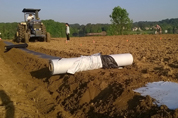Disparity between the Terms “Biodegradability” and “Biobased” Pertaining to Biodegradable Mulch Films
“Biobased” and “biodegradable” are essential and helpful terms when it comes to understanding biodegradable mulch films, yet these terms are often poorly misunderstood, hence miscommunicated. This fact sheet differentiates these terms and others related to biodegradable plastic.
(PDF)
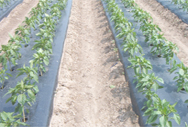
Paper Mulch for Nutsdedge Control in Vegetable Production
Mulches provide crop production benefits, including weed control. However, nutsedge can be a very destructive weed that will break through both polyethylene and biodegradable plastic mulch. Paper mulch prevents nutsedge emergence, providing growers with a mulch that can be used when nutsedge control is needed
(PDF)
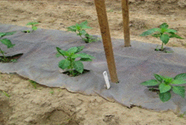
The Economic Feasibility of Adopting Plastic Biodegradable Mulches in Pumpkin Production
This factsheet provides a budget analysis of the net change in profit from use of biodegradable plastic mulch in the production of pumpkins, with focus on the balance between cost savings in labor and disposal and cost increase from biodegradable mulch use.
(PDF)
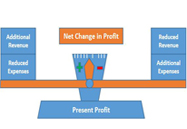
Micro- and Nanoplastics in Soil: Should We Be Concerned?
This factsheet addresses accumulation of micro- and nanoplastics in terrestrial environments, including agricultural soil, which has received little attention compared to plastics in marine environments. Plastics are used routinely in agriculture, and biodegradable plastic mulches may reduce future additions of micro- and nanoplastics to agricultural soil.
(PDF)
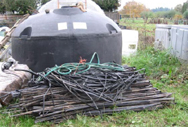
On-Farm Biodegradable Mulch Case Study: Boxx Berry Farm
This case study report documents the experience of a western Washington farm when growers tried out biodegradable plastic mulch alongside polyethylene mulch and paper mulch in their cut flower production.
(PDF)

The Role of Standards for Use of Biodegradable Plastic Mulches: Truth and Myths
Understanding standards is key to understanding how biodegradable plastic mulches are regulated and expected to perform. However, the multitude of different standards for these products have produced some misunderstandings. After explaining what standards are and how society uses them, we clarify the content of various standards related to biodegradable plastic mulches and summarize their objectives and limitations.
(PDF)
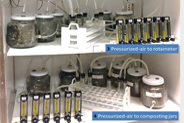
On-Farm Biodegradable Mulch Case Study: Cloudview Farm – Washington State
Following a trial of four types of mulches, the farm operators of Cloudview Farm concluded that biodegradable plastic mulches were a useful alternative to polyethylene (conventional plastic) mulch, but they had concerns about aesthetics and soil health over time.
(PDF)

On-Farm Biodegradable Mulch Case Study: Omache Farm – Washington State
This is the inaugural report of a series of case studies of farms that have field-tested biodegradable mulches. The Omache Farm operators preferred polyethylene (convential plastic) mulch over paper, and biodegradable plastic mulch over polyethylene plastic mulch. Reasons included weed control, labor, and plant growth.
(PDF)
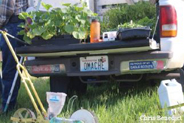
Soil Sampling Method to Assess the Amount of Mulch Fragments in the Field after Tillage
A method to estimate the amount of visible mulch fragments in the soil is presented. This method does not measure the rate or extent of biodegradation, but it does assess the initial stage of mulch degradation after soil incorporation.
(PDF)

Impact of Biodegradable Plastic Mulch on Specialty Crop Production
Research on the efficacy of biodegradable plastic mulches (BDMs) has focused on its effects in vegetable and fruit crop production systems. This summary of research results provides a quick reference to the scientific literature on the use of BDM for vegetable and fruit crops. For some crops, several studies have been carried out in production systems around the world, and findings may vary.
(PDF)
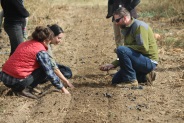
Important Considerations for the Use of Biodegradable Mulch in Crop Production
This Washington State University factsheet reviews factors to consider when considering use of biodegradable plastic mulch, such as the amount needed, installation procedures, and labor savings at end-of-season relative to use of conventional polyethylene mulch.
(PDF)
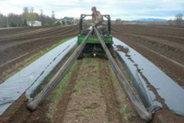
A Summary and Assessment of EN-17033:2018, A New Standard for Biodegradable Plastic Mulch Films
A European Union standard for biodegradable plastic mulch was enacted in January 2018. The standard imposes biodegradation requirements for biodegradable plastic mulch or its constituents and establishes the standardized laboratory testing processes to determine if the product meets the requirements. Issues that remain, but which can be addressed by additional research, are identified.
(PDF)

Mulch Calculator
The Economics of Adopting Biodegradable Plastic Mulch Films
The questions farmers should ask and have answered when considering adoption of biodegradable plastic mulch are the focus of this University of Tennessee fact sheet. Product cost, disposal cost, end-of-season labor implications, and other economic factors are addressed.
(PDF)

Biodegradable Plastic Mulch and Suitability for Sustainable and Organic Agriculture
Biodegradable plastic mulch (BDM) offers crop production benefits similar to polyethylene (PE) mulch but is designed to be tilled into the soil after use, thereby eliminating waste and disposal challenges associated with PE mulch use. This Washington State University fact sheet explains the use of plastic mulch in agriculture, what plastic BDMs are made from, and what constitutes biodegradability. It also provides information about the suitability of plastic BDM for organic agriculture.
(PDF)
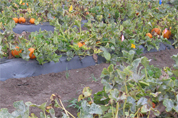
Oxo-degradable Plastics Risk Environmental Pollution
Oxo-degradable plastic mulch is a re-emerging alternative to biodegradable plastic mulch and conventional plastic mulch. However, oxo-degradable plastic is not biodegradable in field conditions; fragments will remain in the soil or surrounding environment for decades, where they become micro or nano particles that are pollutants in soil and water systems. There is a call to ban oxo-degradable plastic packaging in the U.S. and EU because it poses risk to our environment.
(PDF)

Soil Fumigation and Biodegradable Plastic Mulch
Biodegradable mulches are not EPA-approved tarps for soil fumigation. This fact sheet explains the limitations of biodegradable mulch use in soil fumigation systems.
(PDF)

Use of Plastic Mulch Films in U.S. Strawberry Production: Results from a Multi-State Survey about U.S. Strawberry Growers’ Perceptions and Experiences of Plastic Mulch Films
Strawberry growers often use polyethylene plastic mulch films and, consequently, may be potential early adopters of biodegradable plastic mulch films. The report presents the results of a survey of strawberry growers that assesses this potential, as well as opinions about conventional and biodegradable plastic mulch and information about strawberry production practices and farm decision making.
(PDF)
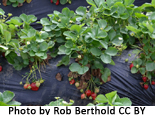
Plastic Mulch in Fruit and Vegetable Production: Challenges for Disposal
Plastic mulch provides many benefits to growers, but is it sustainable? This fact sheet gives a brief overview of how polyethylene (PE) mulch is being disposed of currently and what sustainable options are available.
(PDF)

Soil Carbon and Biodegradable Mulches
Soil carbon, in the form of living microbes, litter and humus, provides many benefits to crop growth. This fact sheet provides a basic overview of soil carbon and addresses how the USDA Specialty Crop Research project, Performance and Adoptability of Biodgradable Mulch for Sustainable Specialty Crop Production, will determine how biodegradable plastic mulches are contributing to soil carbon.
(PDF)
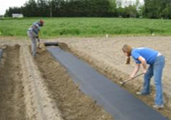
Dimensions and Costs of Paper, Polyethylene and Biodegradable Plastic Mulch
This Washington State University factsheet provides an overview of mulch roll dimensions, weights, costs, and number of rolls needed per acre based on bed spacing.
(PDF)
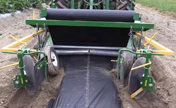
Mechanically Laying Biodegradable Paper and Plastic Mulch
This Washington State University factsheet offers brief instructions on laying paper and plastic mulch film using raised bed mulch layers.
(PDF)
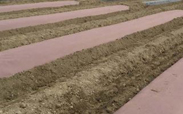
Finding Out How Biodegradable Plastic Mulches Change Over Time
The methods to assess and quantify deterioration and biodegredation of biodegradable plastic mulches are explained in this fact sheet. The USDA Specialty Crops Research project, Performance and Adoptability of Biodegradable Mulch for Sustainable Specialty Crop Production, is using these methods to assess the performance of biodegradable plastic mulches.
(PDF)

What Is an Endophyte?
Endophytes are organisms that exist in association with plant hosts, in foliage and/or roots. These relationships range from symbiotic to pathogenic. This fact sheet describes what endophytes are and how they contribute to overall plant health. Future research will explore the role of endophytes in cropping systems that use biodegradable mulch.
(PDF)
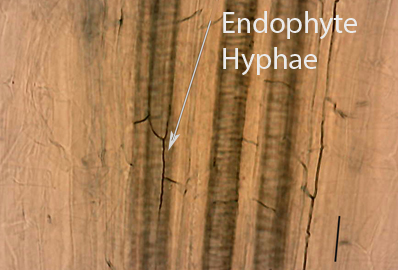
What Is the Technology Adoption Working Group and Why Is It Necessary?
The Technology Adoption Working Group of the USDA SCRI project focused on biodegradable mulches gathers information on grower experiences and opinions to share with the scientists designing and testing biodegradable plastic mulch products.
(PDF)

Biodegradable Plastic Mulch in Organic Vegetable Production Systems
This presentation offers an overview of biodegradable plastic mulch, an update on its status with respect to organic production systems, and preliminary results of one year of field testing conducted by the USDA SCRI research project, Performance and Adoptability of Biodegradable Plastic Mulch for Sustainable Specialty Crop Production.
(PDF)

Biodegradation – Putting Biology to Work
Biodegradation is the process by which microorganisms decompose compounds. These microbes are key to breaking down biodegradable mulches when they are tilled into the soil. Learn more through this fact sheet.
(PDF)
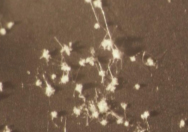
What Is Soil Quality and How Is It Measured?
This fact sheet provides an overview of the physical, chemical and biological soil properties measured to determine soil quality and changes to it. Soil quality is a measure of how well a soil provides nutrients and water for plants and other organisms, cleans and filters water, and recycles essential plant nutrients.
(PDF)

Why Grow Pumpkins in a Biodegradable Mulch Field Study?
This paper explains the selection of pumpkins for the USDA SCRI project in which we are assessing the performance of biodegradable mulches in crop production.
(PDF)

Biodegradable Mulch Film for Organic Production Systems
This fact sheet outlines the rule established by the USDA-AMS National Organic Program defining requirements for a mulch film to be considered biodegradable and biobased.
(PDF)

Glossary of Terms Related to Biodegradable Mulch Films
With terms from “additive” to “transdisciplinary” and lots in between, this resource helps the user navigate the terminology associated with biodegradable plastic mulches and the USDA SCRI project studying their performance and adoptability.
(PDF)

Biodegradable Mulch Products
This resource identifies commercially available biodegradable mulch products, including paper and plastic types. The list is intended to help identify sources of mulch products and relevant contact information. It is neither exhaustive nor intended to be an endorsement of any product.

